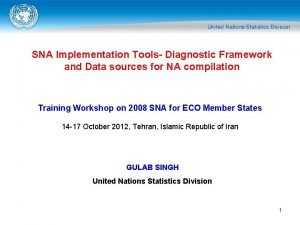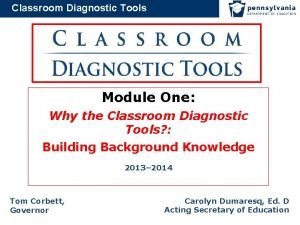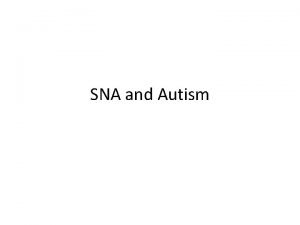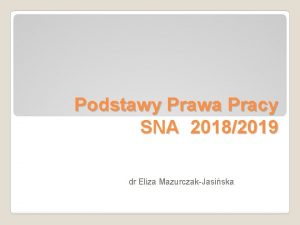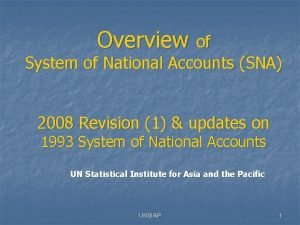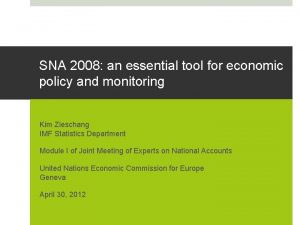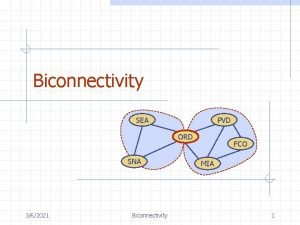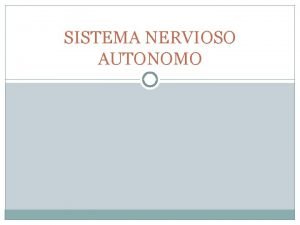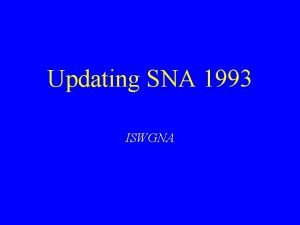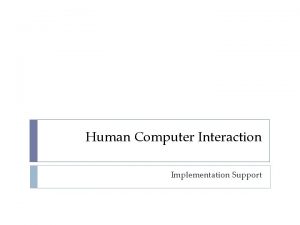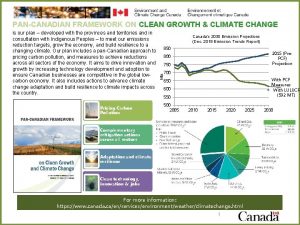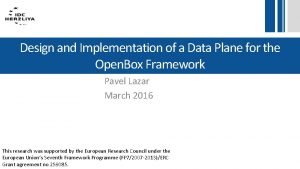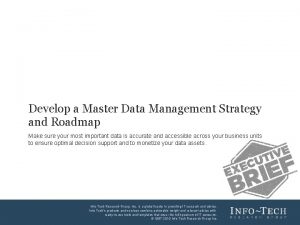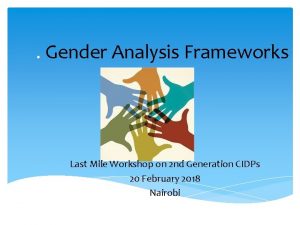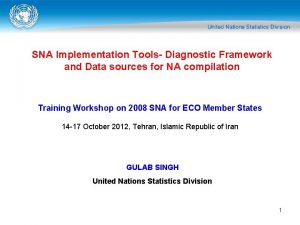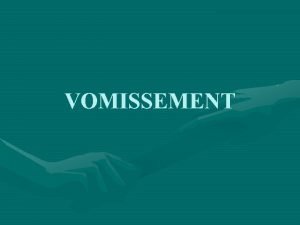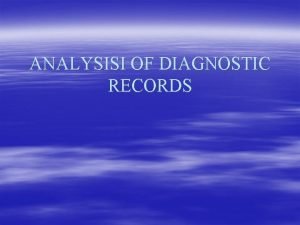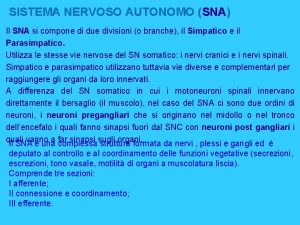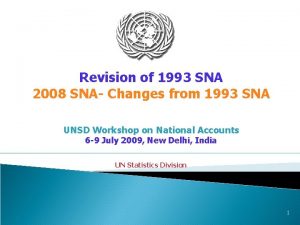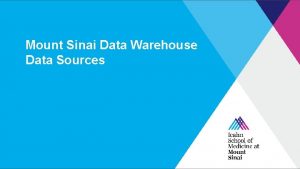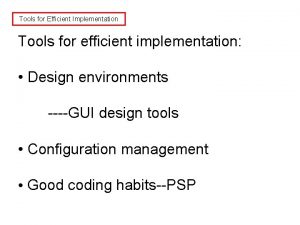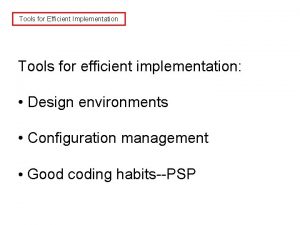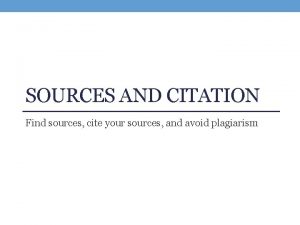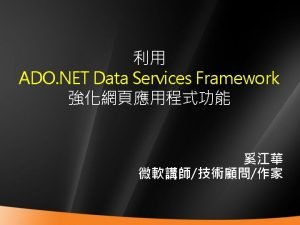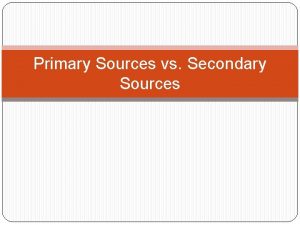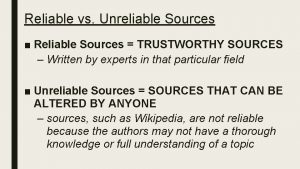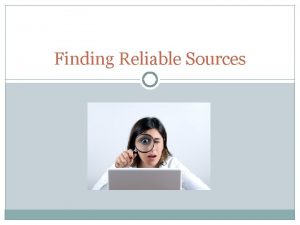SNA Implementation Tools Diagnostic Framework and Data sources






























- Slides: 30

SNA Implementation Tools- Diagnostic Framework and Data sources for NA compilation Training Workshop on 2008 SNA for ECO Member States 14 -17 October 2012, Tehran, Islamic Republic of Iran GULAB SINGH United Nations Statistics Division 1

Outline of Presentation § ISWGNA Strategic Framework : shared steps • for National Accounts and Supporting Economic Statistics § Diagnostic Framework (DF): Self-assessment tool • for National Accounts and Supporting Economic Statistics (DF-NA&ES) 2

ISWGNA Strategic Framework: Implementation of 2008 SNA Programme § Three distinct stages irrespective of level of statistical development of country: • Stage I - Review of strategic framework and detailing of national and regional implementation programmes; • Stage II - Adaptation of classification frameworks, business registers and frames, surveys, administrative data sources and information technology infrastructure; • Stage III - Application of adapted frameworks and source data, backcasting and changeover to 2008 SNA. 3

ISWGNA Strategic Framework: From Diagnosis, Vision to Programme § Need to focus on system wide approach for improving National Accounts and Supporting Statistics § Proposed diagnostic tool to help countries to assess adequacy or otherwise of their national statistical production process to support implementation of the 2008 SNA § This tool will help countries to make self assessment of statistical prerequisites outlined in Stages I and II of the 2008 SNA implementation strategy. 4

ISWGNA Strategic Framework: From Diagnosis, Vision to Programme § Diagnosis and vision document /statistical agenda • for improving the availability and quality of the basic economic statistics and institutional arrangements • through system-wide consultation with stakeholders, policy planners and other users including the academia and business community • through a vision document for minimum core set of shortterm and structural indicators • with agreed human and financial resources and donor/external coordination § Implementation programme • based on vision document/statistical agenda with agreed coordination and monitoring indicators 5

Diagnostic Framework: Approach § System-wide approach: • for basic economic statistics and related institutional environment § Diagnostic approach: • for structured assessment of current strengths and weaknesses of statistical production process § Self assessment approach: • for national ownership of the global initiative for the 2008 SNA implementation strategy § Global and regional coordination approach: • for sharing self assessment for coordination and monitoring of the regional and global program 6

Diagnostic Framework – Elements § Information structure • for planning, monitoring and evaluating the implementation of the SNA with other partners of ISWGNA § UN International Classification of International Statistical Activities • Taxonomy of statistical activities ▫ for relevant economic, social and environment and institutional/managerial domains 7

Diagnostic Framework International Classification of Statistical Activities Domain 1: Demographic and social statistics 1. 2 Labour 1. 5 Income and consumption Domain 2: Economic statistics 2. 1 Macroeconomic statistics 2. 2 Economic accounts 2. 3 Business statistics 2. 4 Sectoral statistics 2. 4. 1 Agriculture, forestry, fisheries 2. 4. 2 Energy 2. 4. 3 Mining, manufacturing, construction 2. 4. 4 Transport 2. 4. 5 Tourism 2. 4. 6 Banking, insurance, financial statistics 2. 5 2. 6 2. 7 2. 8 Government finance, fiscal and public sector statistics International trade and balance of payments Prices Labour cost 8

Diagnostic Framework International Classification of Statistical Activities Domain 4: Methodology of data collection, processing, dissemination and analysis 4. 1 Metadata 4. 2 Classifications 4. 3 Data sources 4. 3. 1 Population and housing censuses; registers of population, dwellings and buildings 4. 3. 2 Business and agricultural censuses and registers 4. 3. 3 Household surveys 4. 3. 4 Business and agricultural surveys 4. 3. 5 Other administrative sources 4. 4 Data editing and data linkage 4. 5 Dissemination, data warehousing 4. 6 Statistical confidentiality and disclosure protection 4. 7 Data analysis 9

Diagnostic Framework International Classification of Statistical Activities Domain 5: Strategic and managerial issues of official statistics 5. 1 Institutional frameworks and principles; role and organisation of official statistics 5. 2 Statistical programmes; coordination within statistical systems 5. 3 Quality frameworks and measurement of performance of statistical systems and offices 5. 4 Management and development of human resources 5. 5 Management and development of technological resources (including standards for electronic data exchange and data sharing) 5. 6 Coordination of international statistical work 5. 7 Technical cooperation and capacity building 10

Diagnostic Framework – Statistical production process § Statistical production process – Outputs • Domain 2: Economic statistics • Domain 1: Income and expenditure of households and labor statistics § Statistical production process – Inputs: • Methodology for data collection, processing, dissemination and analysis Domain 4. 1 Metadata Domain 4. 2 Classifications Domain 4. 3 Data sources Domain 4. 4 Data integration, editing and data linking Domain 4. 5: Dissemination and communication Domain 4. 6: Statistical confidentiality and disclosure protection Domain 4. 7 Data analysis 11

Diagnostic Framework – Statistical production process § Statistical production process – Strategic managerial issues • Activities which are applicable to all statistical activities under domain 2 and some elected activities under domain 1 Domain 5. 1 Institutional framework and principles Domain 5. 2 Statistical programmes; coordination within national statistical systems Domain 5. 3: Quality framework and management of performance Domain 5. 4: Management and development of human resources Domain 5. 5: Management and development of technological resources (including standards for exchange and data sharing 12

Diagnostic Framework – Structure § Structure of minimum set of core indicators: • • • Domain Data Category Data Indicator(s): each indicator under these blocks has 2 -6 quality questions to assess its adequacy or otherwise as it exists in the system. § Data category by economic activity • • Metadata and data reporting Statistical registers and censuses Surveys and administrative sources Technical cooperation and capacity building, priorities and plans for improvements § Data category by institutional sector • • Metadata and data reporting Technical cooperation and capacity building, priorities and plans 13 for improvements

Diagnostic Framework- Quality variables • Metadata and data reporting: • • SNA version followed (53/68/93/2008 SNA) Activity classification (ISIC 3/3. 1/4/other) Product classification (CPC 1/1. 1/2/other) Periodicity (A/Q/M) Timeliness Latest reference (base year) Revision cycle 14

Diagnostic Framework Quality variables- Periodicity and timeliness Metadata and data reporting § Annual (Structural) statistics – • Structural analysis of the economy and annual growth rate § Short-term (high frequency) statistics – quarterly and monthly • Early signal of changes of vulnerabilities and business cycle § Recent crises • High frequency statistics for real sector in addition to external, fiscal, financial and monetary sector ▫ ▫ ▫ ▫ GDP, value added Commodity production Production index Production price index Turnover index New order index Employment 15

Diagnostic Framework Quality variables- Periodicity and timeliness Metadata and data reporting Timeliness § Timely release of information is important to retain the relevancy of data. § Long time lag between collection of data and release of results – makes it ‘stale’ § Failure of providing timely data by NSOs – private players • • • Annual Quarterly Monthly – 18 months after the close of the reference year – 3 months after the close of the quarter – 45 days after close of the month 16

Diagnostic Framework Quality variables- Statistical registers and censuses § List of all productive units in the economy • Sampling frame for drawing samples for the purpose of conducting sample surveys • Regularly updated to accounts for the birth and death of businesses 17

Diagnostic Framework Quality variables- Statistical registers and censuses Population and Housing Census • Population • Housing stock Economic Census • List of establishments/enterprises • Limited characteristics of establishments • Useful for drawing up area frame for covering small and informal sector enterprise Agricultural Census • List of agricultural holdings • Limited characteristics of establishments • Useful for drawing up area frame for covering small and informal sector enterprise 18

Diagnostic Framework Quality variables: Use of Administrative Sources Administrative sources • Administrative sources are sources containing information that is not primarily collected for statistical purposes Use of administrative sources • Less costly – surveys are generally expensive • Reduce the response burden • Good coverage of the target population – eliminate survey errors • Timeliness of statistics – surveys take time to plan, design and pilot questionnaires 19

Diagnostic Framework Quality variables: Use of Administrative Sources Issues in Using Administrative Sources § Units used in those sources do not correspond directly to the definition of the required statistical units (legal units to statistical units – profiling). § The data in administrative sources have generally been collected for a specific administrative purpose (turnover for value added tax (VAT) purposes may not include turnover related to the sales of VAT exempt goods and services) § Classification systems used within administrative sources may be different § Timeliness (different time schedule than that of the NSO advance release calendar) 20

Diagnostic Framework Quality variables: Use of Administrative Sources Issues in Using Administrative Sources § Data from several administrative sources – matching problem § Data from one source may appear to contradict those from another source - may be due to different definitions, classifications or differences in timing, or simply to an error in one source – priority rule) § There a usually a number of problems to overcome when using an administrative source, but these problems can be grouped into categories, for which other countries have usually found solutions. 21

Diagnostic Framework – survey Sample surveys as a tool to collect econ. statistics § Technique for obtaining data about a large population of statistical units by selecting and measuring a limited number of units (sample) from that population • Conclusions about the total population of units are made on the basis of the estimates obtained from the sample § Scientific sample designs should be applied in order to reduce the risk of a distorted view of the population § Sample survey technique is a less costly way of data collection as compared to the census § It may be used in conjunction with a cut-off point or not 22

Diagnostic Framework - Survey Household surveys § Sampling units are households § Household are selected based on a scientifically designed probability survey (generally multi-stage stratified sampling design) § Useful variables estimated include • • Labour force household production for own final use Income and expenditure of households Household assets and indebtedness 23

Diagnostic Framework – survey Enterprise Survey § Sampling frame of enterprises engaged in relevant economic activities – from current up-to-date BR, is a prerequisite § For countries with no BR, list of enterprises drawn from EC conducted in the past § Depending upon the source of the sampling frame surveys may also be classified as either list-based or area-based. • In list-based survey the initial sample is selected from a pre-existing list of enterprises, • In an area-based survey the initial sampling units are a set of geographical areas. After one or more stages of selection, a sample of areas is identified within which enterprises or households are listed. From this list, the sample is selected and data collected. 24

Enterprise surveys Benchmark Information § A complete list of all economic units – sampling frame • mostly establishments for structural data (annual); • often enterprises for short-term (monthly or quarterly) production related statistics. § In the context of data collection, this list is referred to as a ‘listframe’. § But ‘list frames’ are seldom complete. § Business Register, based on administrative sources and/ or Economic Census 25

Enterprise survey Benchmark Information: Its use in data collection § The within-scope units excluded from the list frame are, in some countries, covered using area sampling technique. § This requires a complete list of well-defined small areas, for example • • • Enumeration blocks, Enumeration area, Village etc. § This is referred to as an ‘area frame’. § Area frames are mostly built from the results of Economic / Population Census. • It provides the data on number of establishments and workers by economic activities (ISIC) for each ‘small area’. • These are used while drawing samples for conducting establishment / economic surveys 26

Enterprise survey – data collection Strategies Universe of units engaged in economic activities List-frame segment Large units Public Sector Area-frame segment With fixed premises Small units Within hhs. or w. o. fixed premises Private sector e siv u l c x List-frame based survey ye l l a utu Area-frame based survey M 27

Mixed household-enterprise surveys (1 -2 survey) § Sample of households is selected § Each household is asked whether any of its members own and operate an unincorporated enterprise. § The list of enterprises thus compiled is used as the basis for selecting the enterprises from which desired data are finally collected. § Mixed household-enterprise surveys are useful to cover only unincorporated (or household) enterprises which are numerous and cannot be easily registered. 28

Integrating Annual and Infra-annual enquiries? § Possible only when quarterly accounts are maintained by the establishments. § May not provide results of infra-annual enquiry in time. Rotating Panel Sample? § A panel sampling with annual rotation can be used for covering “small units stratum” of the “list frame segment”, • instead of repeated cross sectional design (independent samples on different occasions) – the usual practice • or a fixed panel sample design. § Expected to provide better estimates of ‘change’ parameters. 29

Thank You 30
 Sna framework
Sna framework Print sources and web sources
Print sources and web sources Diagnostic tools loopback adapter
Diagnostic tools loopback adapter Water management importance
Water management importance Classroom diagnostic tools
Classroom diagnostic tools Classroom diagnostic tools score ranges
Classroom diagnostic tools score ranges Classroom diagnostic tools
Classroom diagnostic tools Diagnostic tools for pfm
Diagnostic tools for pfm Data collection secondary data sources
Data collection secondary data sources The role of the sna
The role of the sna Parasimpatico
Parasimpatico Posgl
Posgl Sna 2018
Sna 2018 Sna 2008
Sna 2008 Sna
Sna Sna in
Sna in Sna 2008
Sna 2008 Ord to sna
Ord to sna Sna y snp
Sna y snp Acétycholine
Acétycholine Sna 1993
Sna 1993 Programming toolkits in hci
Programming toolkits in hci Pcfio
Pcfio Design and implementation of data plane.
Design and implementation of data plane. Conceptual vs theoretical framework
Conceptual vs theoretical framework Unstructured to structured data conversion
Unstructured to structured data conversion Dfd chapter 5
Dfd chapter 5 Describe data and process modeling concepts and tools
Describe data and process modeling concepts and tools Developing a master data management strategy
Developing a master data management strategy The appropriate cutting tool used in cutting fabrics
The appropriate cutting tool used in cutting fabrics Moser framework tools
Moser framework tools
